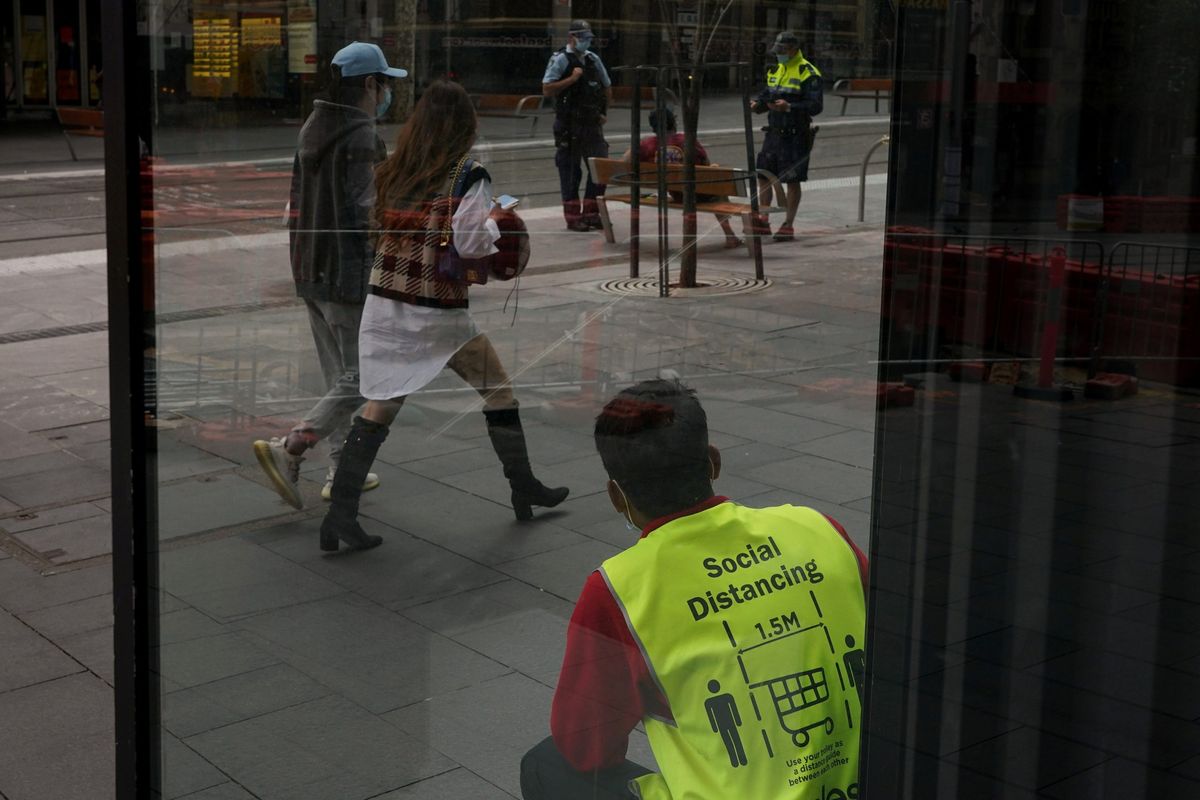Why won’t the worker shortage problem go away?

A few minutes every morning is all you need.
Stay up to date on the world's Headlines and Human Stories. It's fun, it's factual, it's fluff-free.
“I realized that few companies are willing to give me the benefits I’m currently getting by working for myself.”
What’s the worker shortage?
- When the pandemic hit last year, many companies had to lay off employees.
- For some, like the entertainment and travel industry, this was immediate. Whereas for other industries, it was a little more delayed, but almost every single industry saw layoffs of one kind or another.
- But now that economies are recovering from the economic impact of the pandemic, companies are looking to rehire to fill the spots they had previously vacated.
- Except now, people aren’t really looking to fill those spots again, and businesses are dealing with a shortage of workers while they try to resume “normal” operations.
- Just for a bit of context, the United States is looking at a worker shortage to the tune of 4.3 million workers.
Why aren’t people going back to work?
- Well, that really depends on who you ask.
- Many economists and Republican governors across the US said that the emergency increase of unemployment benefits caused the labor shortage.
- They argued that because unemployment benefits were so high, it made more sense to stay home rather than return to the workforce for many people.
- But the thing is, those extra benefits expired in most states over the summer and nationwide at the beginning of September.
- And, according to the US Department of Labor, unemployment claims are down to their lowest point since the pandemic intensified around March of 2020, which suggests that people may have found other ways to make ends meet.
So, is there a different reason?
- Well, there are really a whole bunch of smaller but contributing reasons.
- One reason is that, because the shortage is so severe, employers are competing with one another and making better offers to try and attract talent. This trend is also being seen in childcare.
- So when there’s a shortage of childcare workers, the cost of childcare goes up. This then encourages people with kids to stay at home and watch their kids rather than go and work and pay for childcare.
- Another reason is that some older people who were previously in the workforce who left during the pandemic just retired early, fearing for their health and safety if they stayed at work.
- During the pandemic, the borders were also shut, meaning that there was also a decrease in migrant workers.
- For some, though, the pandemic made them completely reevaluate their entire career.
How did people reevaluate their careers?
- For Nikolina Jeric, the founder of dating and relationship blog 2Date4Love, her approach was to monetize her hobbies during the pandemic.
- Jeric was laid off her previous job at the beginning of the pandemic because “the company wasn’t prepared for such an emergency,” she said. “I had to start all over again and tried to make a living out of my hobbies and things that I truly enjoy.”
- Jeric said that where she lives, “there are almost no job offerings that allow you to work remotely, and the money is not great either.”
- “I realized that few companies are willing to give me the benefits I’m currently getting by working for myself.”
How are businesses coping?
- Many businesses are trying to raise their employee wages to make working for them more appealing.
- Bank of America Corp., Walmart Inc., and even Amazon.com Inc. have announced plans to increase their wages in the coming months and years, making the market for jobs highly competitive and signaling that wage increases are possible for big companies.
- But for smaller businesses, it’s a bit more challenging.
- For example, local restaurants have to choose some combination of increasing worker wages, increasing the prices of their goods and services and decreasing operating hours to stay afloat.
- These small businesses don’t necessarily have the flexibility to raise worker wages enough to attract new employees, so they’re trying to find ways of keeping current teams on board by minimizing costs elsewhere.
What’s next?
- There seems to be some consensus that this problem will lessen over time and that workers will slowly reenter the workforce. But there’s also a underlying sentiment that some of these problems, to some degree, are here to stay.
- People that retire early, for example, aren’t going to be reentering the workforce. And as long as new entrepreneurs are succeeding, they probably won’t be either.
- While this worker shortage doesn’t help the existing global disrupted supply chain and rising inflation, the bottom line is that, for now, businesses have to either meet the demands of workers or find ways to increase productivity, decrease costs and entice new workers.
You drive the stories at TMS. DM us which headline you want us to explain, or email us.




Comments ()